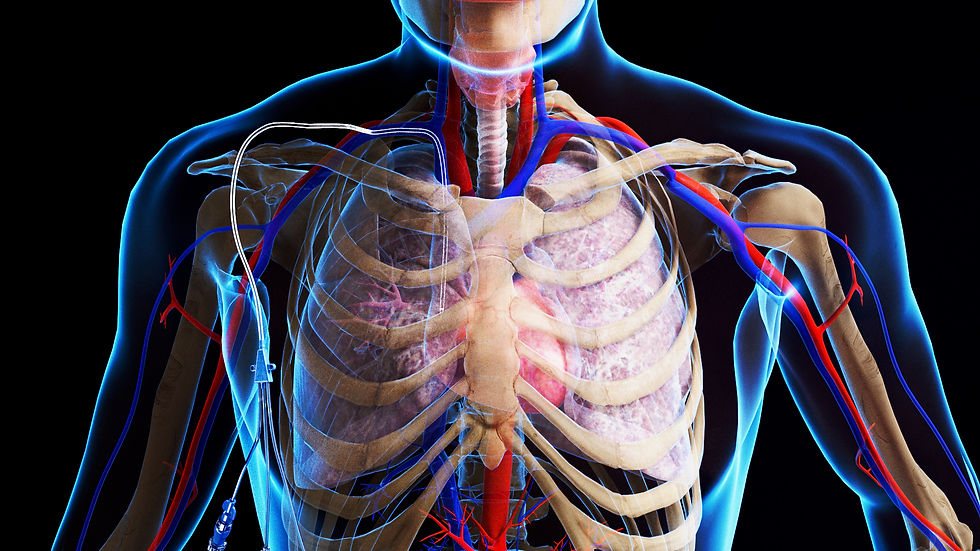Understanding Rigged Definition and Its Importance in 3D Character Animation
- Alexander Ulkin
- Dec 1, 2024
- 3 min read
What Does "Rigged" Mean in 3D Animation?
In 3D animation, rigged definition refers to setting up a digital skeleton within a 3D model to enable realistic movement and flexibility. This rigging framework consists of interconnected joints, bones, and controls, allowing animators to move and pose characters in ways that imitate real-life physics. Rigging is critical in applications like 3D character animation, 3D product visualization, and digital rendering, where fluid motion and natural appearance are crucial.
Rigging is a foundational aspect of 3D animation software, such as Maya, Blender, and Cinema 4D. These tools provide powerful rigging functionalities for creating characters and models that can interact, express emotions, and perform actions as if they were alive. Without rigging, even the most detailed 3D model would lack the dynamics required for animation, rendering it static and unusable in social media video production or commercial video production.

Why Rigging is Essential in 3D Character Animation
Rigging plays a pivotal role in 3D character animation. Here's why:
Adds Realistic Movement
Properly rigged characters can bend, stretch, and move in lifelike ways. When used effectively, rigging transforms static 3D models into animated characters ready for action in 3D advertising and interactive media.
Enables Versatility in Animation
Rigged models can be manipulated and posed in various ways, allowing for various expressions and gestures. This versatility is valuable in social media video production, where quick, engaging animations are needed.
Facilitates Efficient Animation Workflow
Rigging creates a framework that makes it easier for animators to control and fine-tune movements, reducing the time required to achieve desired effects. Efficient rigging setups lead to quicker rendering of art and services rendered.
Rigged Definition - Techniques and Tools Used in the Industry
There are multiple approaches and tools for rigging, each suited to different animation styles and production needs. Here are a few essential rigging techniques and tools popular among professionals:
Inverse Kinematics (IK) and Forward Kinematics (FK)
These are two primary techniques used in rigging. IK controls the end part of a chain (e.g., a hand or foot) to manipulate the entire limb, while FK allows for rotation around individual joints, like elbows or knees. Both are fundamental in 3D animation examples where natural movements are essential.
Blend Shapes and Morph Targets
These allow subtle changes in the mesh to create facial expressions or minor adjustments, making characters appear more lifelike. It's common in commercial video production and video production for social media, where facial expressions add depth to storytelling.
Software and Plugins
Tools like Autodesk Maya and Blender are widely used for rigging. They offer built-in tools and plugins that aid in complex rigging setups. In advanced cases, custom scripts are used to achieve precise control, which is especially useful in 3D product visualization and 3D advertising campaigns.
The Impact of Rigging on Rendering and Visualization
The quality of a rigged character significantly impacts the final rendering of animations. Rigging influences the model's motion, texture, and lighting effects, contributing to the overall product render. A well-rigged model ensures lighting, shadows, and textures respond naturally to the character's movements, creating a cohesive appearance in digital rendering projects.
For social media video agencies and companies focused on 3D rendering and animation, such as Coast Team Studio, rigging is a foundation for creating high-quality animations. Rigged models ensure that animations look engaging across platforms, from web pages to social media ads.
Conclusion: The Value of Rigging in 3D Animation
Understanding the rigged definition is crucial for anyone interested in 3D animation, whether for character creation, product visualization, or video production for social media. Rigging transforms models into animated beings with realistic motion, forming the core of engaging, professional-quality animations. At Coast Team Studio, we specialize in 3D rendering and animation services, bringing products, characters, and concepts to life for impactful media projects.



Comments